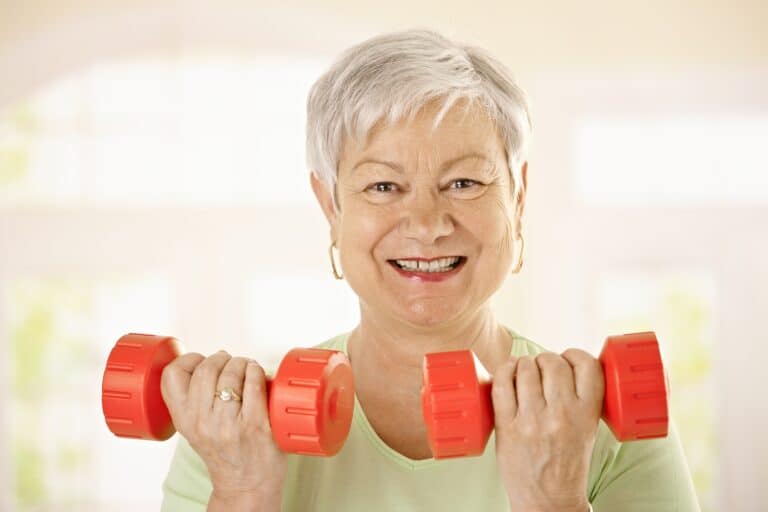Seniors with osteoporosis and arthritis need to engage in regular physical activity to improve their bone density, joint flexibility, and overall health. However, it’s important to consult with a home care professional before starting any exercise program to ensure it is safe and appropriate for your senior’s specific condition. Here are some exercises that may be suitable for seniors with osteoporosis and arthritis:
- Low-Impact Aerobics: Aerobic exercises like walking, swimming, cycling, and dancing can help improve cardiovascular health without putting excessive stress on the joints. These activities also promote bone density and help maintain a healthy weight.
- Strength Training: Resistance training using light weights or resistance bands can help strengthen the muscles around the joints, improving joint stability and reducing the risk of falls. Exercises may include bicep curls, shoulder presses, and leg lifts.
- Range-of-Motion Exercises: Gentle stretching and range-of-motion exercises can help improve joint flexibility and reduce stiffness. Examples include shoulder rolls, ankle circles, and neck stretches.
- Tai chi: This low-impact martial art involves slow, gentle movements that can improve balance, flexibility, and relaxation.
- Water Exercises: Exercising in water can provide resistance and support, making it an ideal activity for seniors with joint pain. Water aerobics, swimming, and walking in a pool are great options.
- Yoga: Yoga can help improve flexibility, balance, and strength and may also help reduce stress and improve mental health. Modified poses that are gentle on the joints can be adapted for seniors with arthritis and osteoporosis.
How Home Care Helps Seniors with Osteoporosis and Arthritis to Do Exercises
Home care providers can play a vital role in helping seniors exercise safely and effectively. Here are some ways elder care assists older people in exercising:
Encourage and Motivate
Seniors may be reluctant to do exercises, but home care can provide encouragement and motivation to help them stay on track. They allow seniors to set goals, celebrate their progress, and remind them of the benefits of exercise.
Provide Assistance
Depending on the senior’s mobility and strength, home care may need to provide physical assistance during exercises. For example, the elder care provider may need to help them get up from a chair, hold their hand during balance exercises, or provide support during stretches.
Modify Exercises
If a particular exercise is too challenging for the senior, home care can modify it to make it easier or less stressful on the joints. For example, an in-home caregiver can have them do seat versions of standing exercises, use lighter weights or resistance bands, or reduce the range of motion.
Monitor Safety
Home care should continually monitor seniors during exercises to ensure they are doing them safely and not experiencing any pain or discomfort. You can modify or stop the activity if you notice any issues.
If you or an aging loved one is considering Home Care in Danbury, CT, please contact the caring staff at Elderly Caregivers LLC. today at (203) 628-7438
- Safe Showering Tips For Seniors Aging In Place - April 28, 2025
- Is Emotional Overeating a Problem for Seniors? - April 4, 2025
- Make the Home Safer with Some Good Spring Cleaning - March 18, 2025

